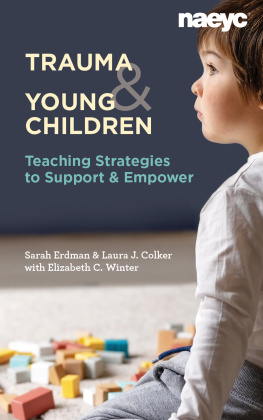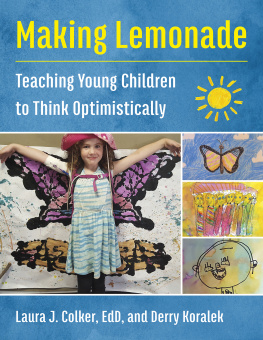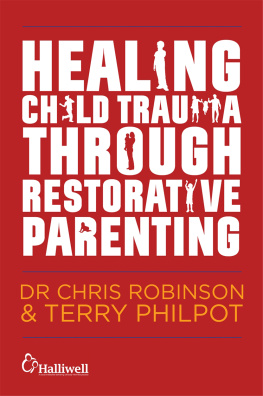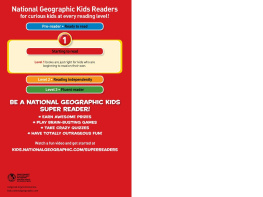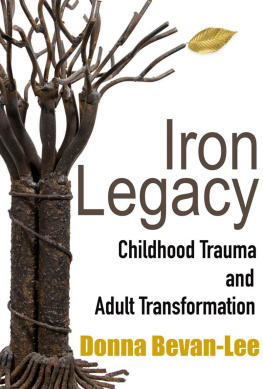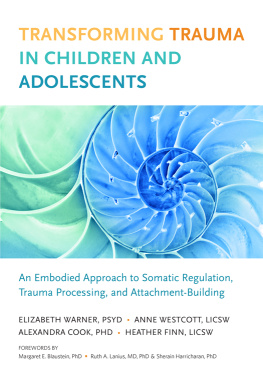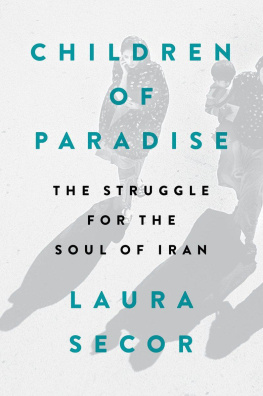Laura J. Colker - Trauma and Young Children
Here you can read online Laura J. Colker - Trauma and Young Children full text of the book (entire story) in english for free. Download pdf and epub, get meaning, cover and reviews about this ebook. year: 2020, publisher: National Association for the Education of Young Children, genre: Children. Description of the work, (preface) as well as reviews are available. Best literature library LitArk.com created for fans of good reading and offers a wide selection of genres:
Romance novel
Science fiction
Adventure
Detective
Science
History
Home and family
Prose
Art
Politics
Computer
Non-fiction
Religion
Business
Children
Humor
Choose a favorite category and find really read worthwhile books. Enjoy immersion in the world of imagination, feel the emotions of the characters or learn something new for yourself, make an fascinating discovery.
- Book:Trauma and Young Children
- Author:
- Publisher:National Association for the Education of Young Children
- Genre:
- Year:2020
- Rating:3 / 5
- Favourites:Add to favourites
- Your mark:
- 60
- 1
- 2
- 3
- 4
- 5
Trauma and Young Children: summary, description and annotation
We offer to read an annotation, description, summary or preface (depends on what the author of the book "Trauma and Young Children" wrote himself). If you haven't found the necessary information about the book — write in the comments, we will try to find it.
Trauma and Young Children — read online for free the complete book (whole text) full work
Below is the text of the book, divided by pages. System saving the place of the last page read, allows you to conveniently read the book "Trauma and Young Children" online for free, without having to search again every time where you left off. Put a bookmark, and you can go to the page where you finished reading at any time.
Font size:
Interval:
Bookmark:

Teaching Strategies to Support & Empower
Sarah Erdman & Laura J. Colker, with Elizabeth C. Winter
National Association for the Education of Young Children
Washington, DC

National Association for the Education of Young Children
1313 L Street NW, Suite 500
Washington, DC 20005-4101
202-232-8777 800-424-2460
NAEYC.org
NAEYC Books
Senior Director, Publishing and Professional Learning
Susan Friedman
Director, Books
Dana Battaglia
Senior Editor
Holly Bohart
Editor
Rossella Procopio
Senior Creative Design Manager
Henrique J. Siblesz
Senior Creative Design Specialist
Charity Coleman
Senior Creative Design Specialist
Gillian Frank
Publishing Business Operations Manager
Francine Markowitz
Through its publications program, the National Association for the Education of Young Children (NAEYC) provides a forum for discussion of major issues and ideas in the early childhood field, with the hope of provoking thought and promoting professional growth. The views expressed or implied in this book are not necessarily those of the Association.
Permissions
NAEYC accepts requests for limited use of our copyrighted material. For permission to reprint, adapt, translate, or otherwise reuse and repurpose content from this publication, review our guidelines at https://www.naeyc.org/resources/pubs/permissions-request-form.
Purchasers of Trauma and Young Children: Teaching Strategies to Support and Empower are permitted to photocopy the handouts in , for educational or training purposes only. Photocopies may only be made from an original book.
(2014). Copyright 2014 by Margaret Middleton.
.
Photo and illustration credits
The photos in this e-book come from a variety of sources, including NAEYC, the author, and Getty Images. All are used with permission.
Trauma and Young Children: Teaching Strategies to Support and Empower. Copyright 2020 by the National Association for the Education of Young Children. All rights reserved. Printed in the United States of America.
Library of Congress Control Number: 2020934383
ISBN: 978-1-938113-68-0
Item e1147
This book was headed to the printer as the novel coronavirus (COVID-19) was taking a firm hold on the United States and around the world. A global pandemic reaches every community, although the impact is different for each person. There are people directly affected by the illness or death of loved ones; the economic impacts of job and wage loss; increased stress and anxiety, magnified for many people by isolation; and the loss of familiarity, structure, and routine. For some, this may have been the first real crisis they have experienced; for others, it may trigger past trauma. For everyone, there is the fear of the unknown. Some psychologists have labeled the anxiety that engulfs us all as grief (Berinato 2020). And like any type of grief, it has to be dealt with and processed in the same way that trauma is.
The needs at the time of this writing, while the pandemic is still spreading and unmanaged, are different than they will be in the months, years, and decades afterward. However, this event will leave its mark on a generation of children both in the immediate future and as those children grow up. Many people have compared the pandemic to the 9/11 terrorist attacks in the United States, illustrating how one event forever changes the course of our lives.
Our sense of safety and security, whatever that looked like before the pandemic, has been taken from us, leaving us feeling fragile and uncertain. The stresses of living in close quarters without outside support and the economic strain of lost wages create an environment ripe for adverse childhood experiences, or ACEs (discussed in detail in this book), and leave children and families vulnerable to other traumas.
The closing or limiting of participation in schools, child care centers, and family child care programs has interrupted the relationships with children and families that so many educators have labored hard to develop. It will take more hard work and perhaps novel approaches to reestablish these connections and help children work through their fears, both those related to the pandemic and those they may have been grappling with previously.
Although COVID-19 has dominated the news cycle for months, the conversation and coverage will change as the situation develops and stabilizes. Even after the pandemic is no longer headline news, it will linger as a potential source of trauma and children and adults will be processing the experience and effects in their own ways throughout their lives. This is true for other current events as well, like families separated at the southern border of the United States; communities grappling with gun violence; and citizens, cities, and countries battling the effects of climate change.
While the aftereffects of this pandemic are unknown at this time, there is a stronger need than ever to work to help mitigate the negative effects of trauma on children. Collectively, we must turn fears into positivity and work proactively to support children, families, and ourselves. We hope this book serves as a multipurpose tool in your kit of resources. Instead of feeling buffeted by the changes in the world around you, whatever they are, you can use your knowledge of how children grow and develop along with the strategies presented in this book and other resources to support children, their families, your education community, and yourself. More than ever, informed, compassionate, and high-quality early childhood educators are critical to the framework of society. We are grateful for the work you put in and your drive to continue to learn and improve for the good of the communities you serve. You are on the front line of giving meaning to a frightening time in history. The hope and assistance you offer children and families will enable children to go forward and flourish.
Sarah Erdman and Laura J. Colker
April 2020
There is a reason you picked up this book. Maybe you are worried about a child in your care, either because you know something is happening with the child and family or because you feel like there is more than what you can see. Maybe you see a pattern in your program or community of children who are exposed to stressful or dangerous situations and you want to make broad changes that will address these situations. Or perhaps it is because of the regular and repeated media reports of gun violence, natural disasters, global pandemics, and refugee and migrant children being separated from their families. Early childhood educators are bombarded with the reality of trauma in young childrens lives, and the information in this book is a definitive step toward making a difference. Not only do you see the issue and want to make change, but you are also finding the resources to make it happen.
Young children need guidance and support to thrive emotionally, socially, cognitively, linguistically, and physically. For many children, trauma disrupts this development, making it challenging to learn until the effects are addressed. It is critical that early childhood educators be able to support children and help them develop resilience and coping strategies. Nearly every educator will interact with a child or family who has been affected by trauma, and research shows that the support and intervention a child receives when young can make a critical difference.
Font size:
Interval:
Bookmark:
Similar books «Trauma and Young Children»
Look at similar books to Trauma and Young Children. We have selected literature similar in name and meaning in the hope of providing readers with more options to find new, interesting, not yet read works.
Discussion, reviews of the book Trauma and Young Children and just readers' own opinions. Leave your comments, write what you think about the work, its meaning or the main characters. Specify what exactly you liked and what you didn't like, and why you think so.

